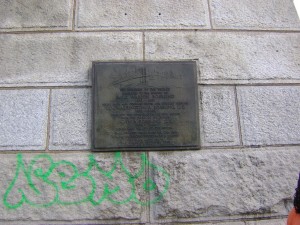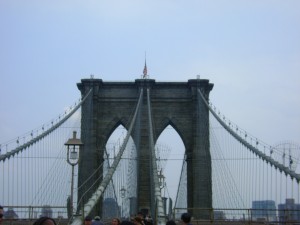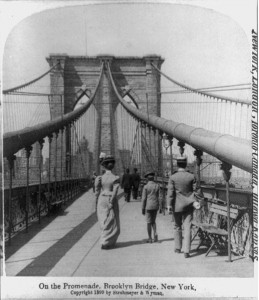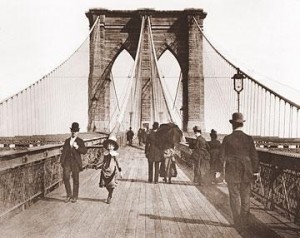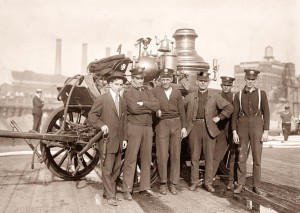Published by Koharu on 20 Oct 2009
Walking Tour (Oct 20th)
The walking tour was an interesting and educational experience. While we walked, we were allowed a glimpse of the world that raised Whitman and procured some of the greatest revolutionary thinkers in American history.
We visited the Plymouth Church near where Whitman lived and where he and key figures in history like Abraham Lincoln, Martin Luther King Jr. and Harriet Beecher Stowe attended mass.
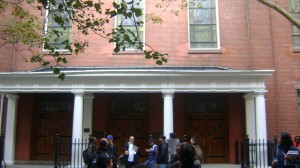
The front of Plymouth Church
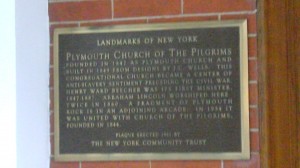
The Plymouth Church is a New York Landmark
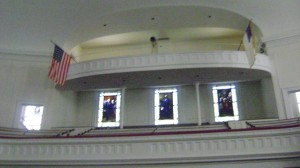
Then we moved on to the Brooklyn Promenade where Abraham Lincoln himself once said “There may be finer views than this in the world, but I don’t believe it.” While the landscape is notably different than what Lincoln saw during his time in New York, the impact is the same. When you know where to look, New York can be breathtakingly beautiful.
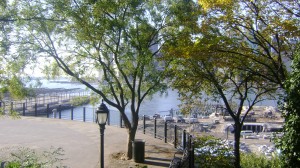
A view from the Brooklyn Promenade.
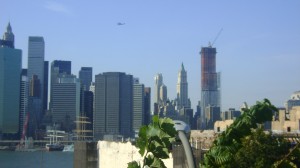
Part of the Manhattan Skyline.
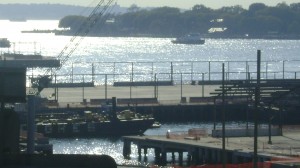
A view from the Brooklyn Promenade.
Even today, there are still water taxis.
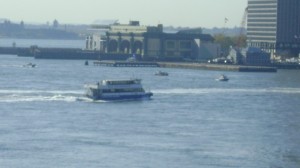
The modern day ferry.
Even from a distance, the Brooklyn Bridge is an impressive structure- you don’t need to be close up to see all the detail and hard work that went into a bridge that decades after its construction, still stands solid.
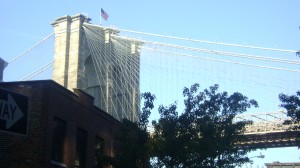
The Brooklyn Bridge from a distance.
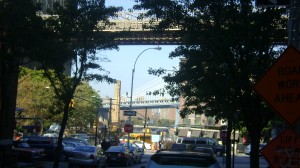
The Brooklyn Bridge with the Manhattan Bridge in the background.
After that we made our way over to the Eagle Warehouse, a now residential building that once housed the ‘Brooklyn Eagle’ where Whitman worked as an editor. Whitman used to look out his second floor window at Manhattan street. The street below it is still cobble-stoned.
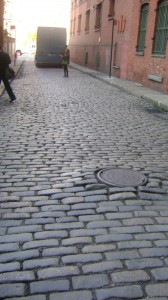
Below Whitman's old window, the street is still cobblestoned.
Standing on the uneven stone, I couldn’t imagine how people drove carriages or even walked on the streets without falling over.
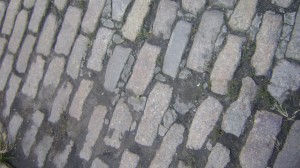
It's as bumpy as it looks.
The last stop on out tour was the Fulton pier. Or outside of if at least. The pier was closed for filming today- go figure. That aside, we read the first 4 sections of “Crossing the Brooklyn Ferry while taking in the sights and sounds of Old Fulton Street.
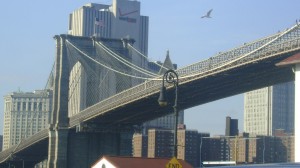
I didn’t just learn about Whitman today, I gained a greater appriciation for the borough I live in.
